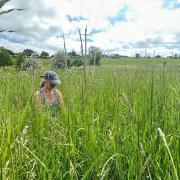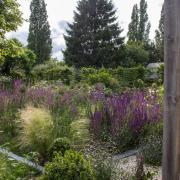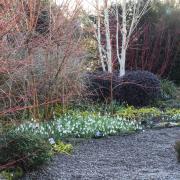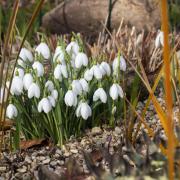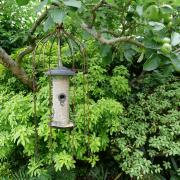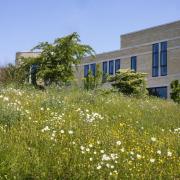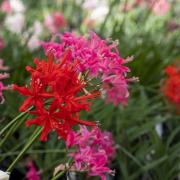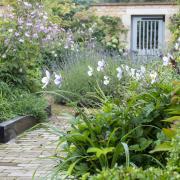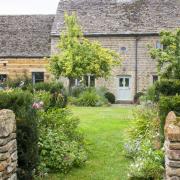A sustainably-maintained lawn really doesn’t have to look like rough pony pasture. David Hedges-Gower has some sensible tips to help keep our lawns healthy and beautiful
Looking after your lawn in a responsible way – a sustainable way – is one of today’s hot garden topics. But does ‘sustainable’ mean will it lead to more work, more effort and more cost? Is it worth the bother? No, no, no... and a resounding yes.
To understand this, just take a look at grasses growing in a field, on a National Trust or similar old estate, or in the middle of Dartmoor – what you’ll see are natural or native grasses, some nurtured over time, others evolving by themselves, and all thriving in beautiful soils and in their own little ecosystems. And achieving this healthy and natural growth is the essence of sustainable lawn care.
However, you probably don’t want your lawn to look like rough pony pasture – no problem. To be beautiful, a sustainable lawn simply needs your help to support its natural growth habit, while using only natural interventions to keep it under control. Believe me, when you get this right you actually reduce your own work, as you are helping your grasses to grow stronger, thicker and greener by themselves.
So, let’s look at some interventions that help you to maintain a natural but managed environment for a wonderfully healthy lawn.

PRUNING A LAWN
In a balanced and healthy ecosystem, each component is kept in check by the other components – ponies and cattle keeping down Dartmoor grass for example. And in our gardens, most plants need some form of pruning – including your lawn. And in the UK, we are lucky to have two forms of pruning. Mowing and scarification, as they are known. However, scarification usually only happens as a last-resort, a by-product from some moss and debris removal. But do it regularly and properly – i.e. not with a Springbok or wire rake, but with a fixed-blade scarifier – and you will also help the native bents and fescues to spread (you will have these grasses in your lawn!). So, while you’re keeping the thatch under control, the grass is rewarding you with free plants and a much thicker lawn. This is how the professionals keep their grass so good, and it saves expensive over-seeding requirements.
IMPROVE YOUR SOILS
Healthy natural grassland enjoys healthy aerobic soil systems – and you can too simply by keeping following a simple aerating regime. This reintroduces oxygen and rainwater through new channels as well as the main benefit of de-compacting our important soils. Remembering grasses are merely plants living in an environment (our soils) makes you soon realise they are key to plant health.
Making sure you are not a slave to your lawn, carry this out using a hollow tine aerator at least once per year.
Unfortunately for large lawns, you will still have to rely on a petrol-powered machine, but for more manageable areas you can get some exercise and well-deserved fresh air using a simple manual aerator.

MOSS CONTROL
‘Moss killer’ is a completely misleading concept – domestic customers have never been able to buy chemicals that actually kill the moss. So, change your mindset to ‘moss control’ – and embrace the natural way to achieve this. First, remove much of the moss plant by scarifying – and only afterwards apply a product called Iron or Fe (a natural substance we all have in our bodies). This cannot kill the invisible moss spores but it does seriously dehydrate the moss plant. And as you know, moss needs moisture and hates dryness. So scarify first to remove the upper parts of the moss, and then apply a liquid form of Fe to dry out the remaining base of the plant. Then native grasses will fill in and make it almost impossible for spores to be able to germinate.

FEED THE SOILS AND THE PLANTS
Having now thinned out the lawn of moss and thatch, your grasses will be able to breathe again, and they will be hungry for a good feed. Traditional fertiliser is the enemy of sustainable practice – it’s like you and I eating processed food covered in chalk or polymer coating! But now there is a fantastic lawn food made from composted recycled food waste. And it conditions the soil too. What could be more sustainable than taking from nature for the plate, and then giving it back again? Packed with humic, fulvic and amino acids, it also has the all-important mycorrhiza, nature’s own root-food for wild plants, and now available for your own garden. It’s all about simple soil biology. Create and improve the environment grass likes to thrive in.
READ MORE: 10 National Garden Scheme open gardens to visit in and around the Cotswolds.
IT’S A TEAM EFFORT
The fantastic thing about these sustainable lawn care techniques is that they are inter-dependant, each helping the other to perform even better. With this strong foundation, your lawn is in much better shape to make the most of rainfall (including better recovery from both drought and heavy rains) and warm sunlight for photosynthesis – basically doing exactly what nature always intended, and doing it superbly. And you? Well, I think you deserve a medal for choosing to step away from the fossil-fuel and chemical-driven lawn care industry of the past. But for now, a happier and healthier lawn for no greater effort surely will do?
davidhedges-gower.com
Twitter: dhedges_gower
Facebook: davidhedgesgower
Instagram: davidhedgesgower





